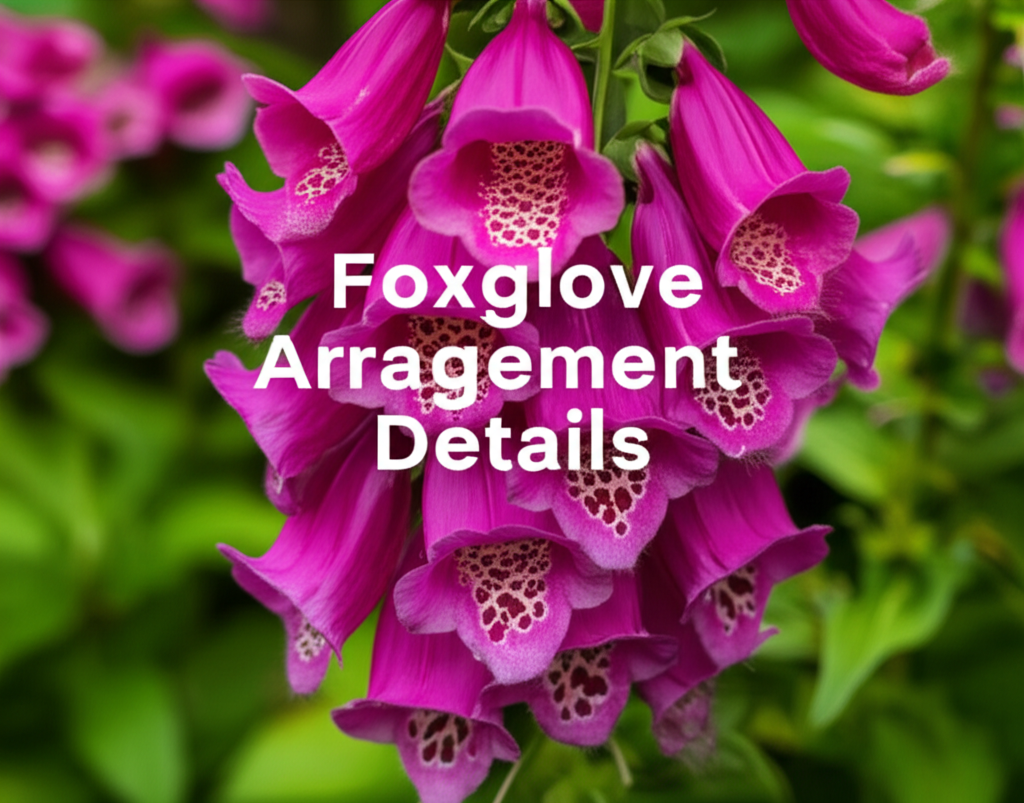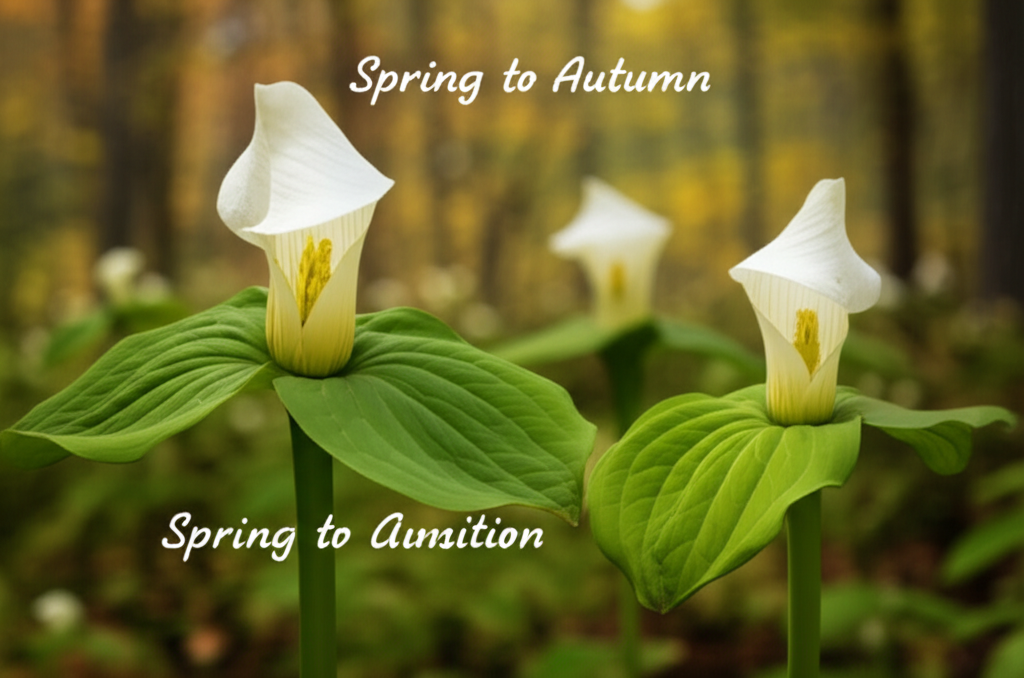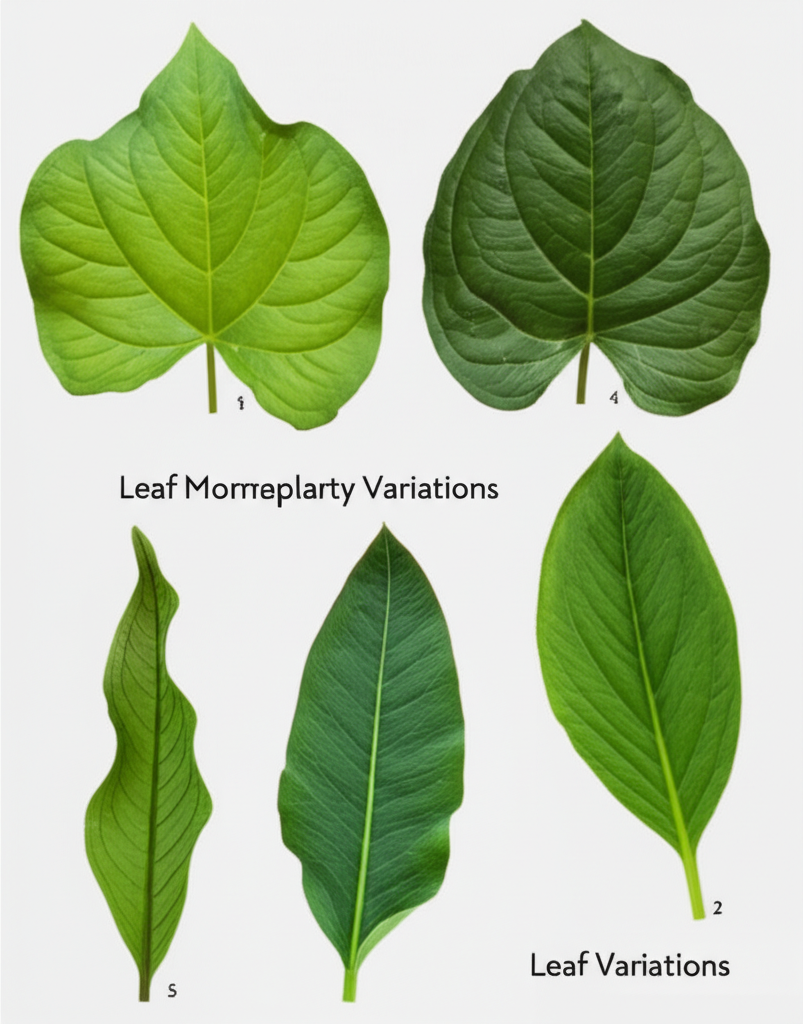Introduction to Foxglove Beardtongue (Penstemon digitalis)
Foxglove Beardtongue, scientifically known as Penstemon digitalis, is a captivating native perennial wildflower that graces gardens and natural landscapes across North America. Renowned for its tall, elegant spires of tubular, often white to pale lavender flowers, this plant offers a delightful visual appeal and serves as a valuable resource for pollinators. While often appreciated for its individual bloom stalks, understanding how to arrange and group these plants effectively can transform a garden space, creating a more impactful and cohesive display. This guide delves into the intricacies of Foxglove Beardtongue cluster arrangement, providing factual information, practical tips, and considerations for creating stunning floral compositions.
Understanding the Growth Habit of Foxglove Beardtongue

To effectively arrange Foxglove Beardtongue, it’s crucial to understand its natural growth characteristics. Penstemon digitalis typically grows in clumps, sending up multiple upright flower stalks from a central base. These stalks can reach heights of 2 to 5 feet, depending on the cultivar and growing conditions. The flowers themselves are borne in terminal racemes, appearing in late spring to early summer. The plant generally forms a somewhat bushy habit, with lance-shaped, glossy green leaves that provide a handsome backdrop even when not in bloom.
Key Growth Characteristics for Arrangement:
- Height: 2-5 feet (60-150 cm)
- Spread: 1-1.5 feet (30-45 cm) per clump
- Bloom Time: Late spring to early summer (May-July)
- Flower Color: White, pale pink, lavender, deep purple (cultivar dependent)
- Light Requirements: Full sun to partial shade
- Soil Preferences: Adaptable, but thrives in well-drained soils
- Water Needs: Moderate, drought-tolerant once established
The Principles of Effective Cluster Arrangement
Arranging any plant in a garden setting involves considering several fundamental design principles. When working with Foxglove Beardtongue, these principles help create a visually pleasing and harmonious display. The goal is to leverage the plant’s natural form and bloom characteristics to achieve a desired aesthetic.
Key Design Principles for Cluster Arrangement:
- Repetition: Repeating the Foxglove Beardtongue throughout a garden bed creates a sense of unity and rhythm.
- Grouping: Planting in odd-numbered groups (threes, fives, sevens) often appears more natural and dynamic than even-numbered groupings.
- Layering: Position Foxglove Beardtongue in relation to plants of varying heights and textures to create depth and interest. Taller varieties can be placed towards the back or center of a border, while shorter ones can lead the eye.
- Contrast: Consider contrasting the flower color and form of Foxglove Beardtongue with neighboring plants. For instance, the spiky blooms can contrast beautifully with mounding or spreading groundcovers.
- Movement: The upright flower stalks of Foxglove Beardtongue, especially when planted in drifts, can sway gently in the breeze, adding a sense of natural movement to the garden.
- Massing: Planting multiple clumps together creates a significant visual impact, showcasing the plant’s full floral potential.
Planning Your Foxglove Beardtongue Cluster Arrangement
Successful garden design starts with careful planning. Before digging, consider the desired outcome, the site conditions, and how the Foxglove Beardtongue will integrate with its surroundings.
Steps for Planning Cluster Arrangements:
- Assess Site Conditions: Evaluate sunlight exposure, soil type, and drainage. Foxglove Beardtongue generally prefers full sun to partial shade and well-drained soil.
- Determine Purpose: Are you aiming for a focal point, a mass planting for pollinators, or a naturalistic drift? The purpose will influence the scale and density of your arrangement.
- Select Cultivars: Different cultivars of Penstemon digitalis offer variations in height, flower color, and bloom density. Choosing complementary cultivars can enhance the arrangement.
- Consider Companion Plants: Think about plants that bloom concurrently or in succession, and those that offer contrasting foliage or form.
- Map Your Design: Sketch out your planting plan, indicating the placement and spacing of each Foxglove Beardtongue clump.
- Calculate Plant Needs: Based on your spacing plan, determine the number of plants required.
Practical Techniques for Planting and Arranging
Once your plan is in place, the next step is the physical act of planting. Proper spacing and planting techniques are crucial for the long-term health and visual appeal of your Foxglove Beardtongue clusters.
Planting and Arrangement Techniques:
- Spacing: For mass plantings or drifts, space individual clumps 12 to 18 inches apart. This allows them room to mature and create a fuller effect without becoming overcrowded too quickly. If planting as a single specimen or in smaller groups, spacing can be adjusted accordingly.
- Planting Depth: Plant Foxglove Beardtongue at the same depth it was in its nursery container. Ensure the crown of the plant is not buried.
- Soil Preparation: Amend the soil with compost or other organic matter to improve drainage and fertility, especially if your soil is heavy clay.
- Watering: Water thoroughly after planting to settle the soil and encourage root establishment.
- Creating Drifts: For a naturalistic look, plant Foxglove Beardtongue in flowing, irregular groups rather than straight lines. Mimic natural patterns by staggering the placement of plants within the drift.
- Creating Focal Points: A cluster of three or five plants, perhaps a taller cultivar, can serve as a striking focal point in a garden bed or at the corner of a lawn.
- Interplanting: Combine Foxglove Beardtongue with lower-growing plants like ornamental grasses, sedums, or other perennials that will fill in the spaces between the taller flower stalks.
Comparing Foxglove Beardtongue with Other Perennials for Arrangement
The success of a Foxglove Beardtongue arrangement often hinges on its integration with other plants. Understanding how its growth habit and bloom time compare to other common garden perennials can help in making informed planting decisions.
| Plant Name | Growth Habit | Bloom Time | Height Range | Arrangement Suitability | Key Companion Considerations |
|---|---|---|---|---|---|
| Foxglove Beardtongue Penstemon digitalis |
Upright, clumping | Late Spring – Early Summer | 2-5 feet | Mass plantings, drifts, focal points, border filler | Pairs well with mounding perennials, ornamental grasses, plants with contrasting foliage colors. |
| Coneflower Echinacea purpurea |
Upright, spreading | Summer – Fall | 2-4 feet | Mass plantings, borders, pollinator gardens | Complements the upright form of Penstemon with its daisy-like flowers. |
| Salvia Salvia spp. |
Upright, bushy | Summer – Fall | 1-4 feet | Borders, mass plantings, contrast to mounding plants | Offers a variety of flower colors and forms that can contrast or harmonize with Penstemon. |
| Astilbe Astilbe spp. |
Mounding, feathery plumes | Summer | 1-3 feet | Shade gardens, mass plantings, textural contrast | Provides soft, feathery texture that contrasts with the spiky blooms of Penstemon, prefers more moisture. |
| Hostas Hosta spp. |
Mounding, leafy | Summer (flowers) | 6 inches – 3 feet | Groundcover, foliage contrast, shade gardens | Excellent for filling space at the base of Penstemon, offering striking foliage contrast. |
Cultivars and Their Arrangement Potential
The diversity within the Penstemon digitalis species, particularly among cultivated varieties, offers a range of possibilities for creative arrangements. Understanding the specific characteristics of different cultivars allows for more tailored and visually appealing designs.
Popular Cultivars and Arrangement Ideas:
- ‘Husker Red’: Features attractive reddish-bronze foliage throughout the season, with white to pale pink flowers. This cultivar is excellent for adding color and structure, especially in mass plantings where its foliage can provide year-round interest. Arrange it with plants that complement its reddish tones, such as dark-leaved Heucheras or complementary yellow flowers.
- ‘Prairie Twilight’: Known for its deep purple-pink flowers atop sturdy stems. This cultivar can be used to create striking vertical accents within borders or as a focal point in a mass planting. Its richer color pairs well with silver foliage plants or vibrant yellows.
- ‘White Bedder’: Produces abundant pure white flowers. This cultivar is versatile and can be used to brighten shady spots or create a clean, crisp look in a planting scheme. Its white blooms offer a beautiful contrast to deep-colored foliage or darker-hued neighbors.
- ‘Blackberry Ice’: Offers a unique combination of dark purple stems and pale lavender-pink flowers. This cultivar brings a touch of gothic charm and can be effectively grouped with plants that echo its darker tones or provide a bright contrast to highlight its unique coloring.
Maintenance Considerations for Arranged Foxglove Beardtongue
To ensure your Foxglove Beardtongue clusters remain healthy and visually appealing, regular maintenance is essential. Proper care will encourage reblooming and maintain the desired plant structure.
Key Maintenance Tasks:
- Deadheading: While not strictly necessary for plant health, deadheading spent flower stalks can encourage a second flush of blooms and maintain a tidier appearance, especially in formal arrangements.
- Cutting Back: After the first hard frost, or in late winter before new growth emerges, cut back the dead flower stalks and foliage to about 6 inches from the ground. This promotes vigorous new growth in the spring.
- Division: Foxglove Beardtongue can become overcrowded over time. If clumping becomes too dense or the plant’s vigor declines, divide the clumps in early spring or fall every 3-5 years. This also provides new plants for expanding your arrangements.
- Watering: Water regularly during periods of drought, especially during the first year after planting and during dry spells in summer. Once established, it is relatively drought-tolerant.
- Fertilizing: Foxglove Beardtongue generally does not require heavy fertilization. A light application of compost in the spring is usually sufficient. Over-fertilizing can lead to leggy growth.
Pros and Cons of Cluster Arrangement
Every gardening technique has its advantages and disadvantages. Understanding these can help in deciding if cluster arrangements of Foxglove Beardtongue are the right approach for your garden.
| Aspect | Description | Pros | Cons |
|---|---|---|---|
| Steps | Planning, site assessment, cultivar selection, spacing, planting, ongoing maintenance. | Creates visual impact, attracts pollinators, provides structure, enhances garden aesthetics. | Requires planning and effort, can take time to establish for full effect, potential for overcrowding if not managed. |
| Pros | Planting multiple clumps together. |
|
|
Conclusion: Creating a Dynamic Garden with Foxglove Beardtongue Clusters
The arrangement of Foxglove Beardtongue into clusters offers a powerful way to enhance garden design, attract vital pollinators, and create a visually stunning display. By understanding the plant’s growth habits, applying fundamental design principles, and meticulously planning your planting, you can cultivate beautiful and thriving Foxglove Beardtongue displays. Whether you opt for naturalistic drifts or striking focal points, the upright spires of Penstemon digitalis are sure to bring elegance and ecological value to your landscape. Embrace the versatility of this native gem and enjoy the captivating beauty it brings to your garden.



